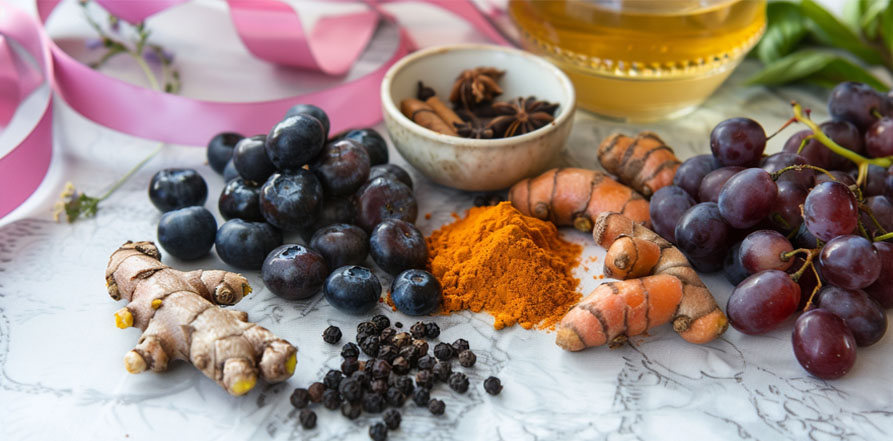By Donnie Yance
October is Breast Cancer Awareness Month. This review examines one of breast cancer’s most challenging aspects: dormant disseminated tumor cells (DTCs) that fuel cancer recurrence. Despite initial treatment success, 25-45% of breast cancer patients relapse months or years later with fatal secondary or metastatic disease, with dormancy being the key culprit behind both early and late recurrence.
Key Findings
Dormancy Triggers:
- Tumor hypoxia, extracellular matrix (ECM) remodeling, and therapy-induced stress drive dormancy by altering cellular metabolism, gene expression, and immune interactions
- These factors enable long-term survival of dormant breast cancer cells
- Survival Mechanisms: There are five major adaptive survival mechanisms employed by dormant breast cancer cells:
- DNA Damage Response– Enhanced repair mechanisms
- Autophagy– A self-preservation process where cells recycle damaged components to generate energy and survive better under stress
- Transcriptional Reprogramming– The process of selectively turning genes on or off, allowing dormant cells to activate survival and stress-resistance programs while suppressing growth signals
- Epigenetic Reprogramming– Chemical modifications to DNA and histones that alter gene expression, enabling dormant cells to suppress growth and resist stress without changing their DNA sequence
- Immune Evasion– Avoiding immune surveillance 1
The Clinical Challenge
With no conventional therapies currently approved for dormant cancer cells, a deeper understanding of dormancy-associated survival mechanisms is crucial for identifying therapeutic targets.
Preclinical research has demonstrated that numerous herbal extracts and phytochemicals offer significant therapeutic potential in breast cancer treatment.
These natural compounds have shown efficacy in multiple mechanisms of action, including: the inhibition of tumor proliferation, suppression of metastatic spread, reduction of angiogenesis, and mitigation of drug resistance pathways.2,3
Beyond their direct anticancer properties, several herbal compounds demonstrate synergistic interactions when combined with conventional therapies. These combinations can enhance the effectiveness of standard chemo and hormone therapy regimens while simultaneously reducing associated toxicities. Furthermore, specific herbal formulations serve as valuable supportive therapies, helping to maintain immune system function and alleviate common chemotherapy side effects, including fatigue, nausea, myelosuppression, and peripheral neuropathy.4,5
The Critical Need for Herbal and Dietary Interventions
1. Current Treatment Limitations
Conventional cancer therapies target proliferating cells, but dormant cells remain in a non-proliferative state, making them inherently resistant to standard treatments. This creates an urgent need for alternative approaches that can target these survival mechanisms.
2. Plant-Based Medicine: A Promising Solution
Research demonstrates that chemopreventive herbal compounds can target cancer stem cell’s (CSC’s) survival programs. Epidemiological evidence shows a strong correlation between consumption of plant-based diets and reduced cancer risks.6
3. Advantages of Herbal / Dietary Compounds
Herbal medicine, a cornerstone of traditional medical systems such as Traditional Chinese Medicine and Ayurveda, is gaining recognition as a promising complementary approach in cancer treatment. These plant-derived bioactive therapeutics demonstrate multiple mechanisms including direct antitumor activity, anti-inflammatory responses, antioxidant protection, immunomodulation, and the induction of programmed cell death (apoptosis).7,8
The value of herbal medicine results from each plant’s ability to influence multiple signaling pathways simultaneously while producing diminished or no side effects.9
10
Herbal and dietary compounds such as curcumin, resveratrol, berberine, and EGCG tend to aim at a multitude of cellular targets. This multi-targeted nature may be advantageous in targeting CSCs because the multifaceted mode of action may hinder the cell’s ability to develop resistance and/or dormancy.
The benefits of naturally-occurring herbal and dietary compounds include:
- They are already present in commonly consumed foods
- They have very low or no toxicity
- Many have shown great potential as additions to chemotherapy in clinical trials11
The antitumor properties and underlying mechanisms of several well-studied plant compounds, include: curcumin, resveratrol, epigallocatechin gallate, withaferin A, thymoquinone, baicalin, berberine, Oldenlandia diffusa, and Salvia miltiorrhiza.
These phytochemicals exert antitumor effects by: inducing apoptosis, inhibiting cell proliferation and metastasis, modulating immune responses, and sensitizing tumor cells to chemo and radiation. Furthermore, many of these agents regulate key signaling pathways, such as NF-KB, phosphatidylinositol 3-kinase (PI3K) / AKT, p53, signal transducer and activator of transcription 3, and extracellular signal-regulated kinases 1/2, and the tumor microenvironment.12
4. Specific Targeting of Dormancy Survival Mechanisms
Natural compounds can target the exact survival mechanisms previously mentioned.
- Autophagy Modulation: Herbal compounds play a pivotal role in the eradication of breast cancer stem cells (BCSCs) through the inhibition of biological activities and induction of apoptosis13
- Autophagy is critical for dormant cell survival.
- DNA Damage Response: Researchers are aware of ursolic acid’s ability to reduce enzymes that promote inflammation and contribute to abnormal cell cycles, reducing expression of genes that turn on cellular apoptosis in cancer stem cells. This process triggers the “cell suicide” switch in cancerous cells and inhibits cancer cell DNA replication.
- Immune System Enhancement: Each day the body produces approximately 10,000 cancer cells which can invade, proliferate, and spread. One of the most common factors involved in the pathogenesis of cancer is vitamin D3 deficiency 14
5. Evidence for Specific Compounds: Research identifies numerous natural compounds effective against cancer stem cells such as: Thymoquinone, Curcumin, Resveratrol, EGCG.
Known chemoprevention agents including: sulforaphane, vitamin D3, curcumin, quercetin, genistein, ursolic acid, and EGCG may attribute their success at least in part to regulating self-renewal and differentiation of tissue-specific stem cells15
Piperine (from black pepper): Has been identified as one of the major compounds that targets cancer stem cells of breast tumors16
Anthocyanins (berry compounds): Equip the body with natural healing ability to treat colorectal cancer, reduce breast cancer tumors, and limit leukemia cells from spreading. These safe dietary components can control cancer stem cells which are otherwise uncontrollable.
6. Combination Approaches
Specific combinations of phytochemicals may be far more effective in protecting against cancer than isolated compounds because combinations of dietary chemopreventive agents can sometimes result in significant activities at concentrations where any single agent is inactive. Thus, the synergistic use of groups of phytochemicals is an attractive approach in targeting CSCs.17
18
Conclusion
Dormant breast-cancer cells can employ sophisticated survival mechanisms that current mainstream therapies don’t address. The successful conventional treatment of cancer stem cells will rely on the development of cancer drugs capable of influencing many cellular mechanisms simultaneously. Natural compounds represent a historically rich source of novel, biologically active compounds which are able to interact with a large number of cellular targets.19
Given that no dormancy-specific therapy has yet been approved, and the urgent need to prevent the 25-45% recurrence rate in breast cancer patients, herbal and dietary interventions represent a critical, evidence-based approach to target the very survival mechanisms that enable dormant cancer cells to persist and eventually cause fatal recurrence.20
The widespread integration of specific natural compounds into treatment protocols could provide the multi-targeted approach necessary to eradicate dormant cancer cells before they can reactivate and cause a recurrence.
About the Author:
Donald R. Yance is the founder of the Mederi Center. A Clinical Master Herbalist and Certified Nutritionist, Donnie is renowned for his extraordinary knowledge and deep understanding of the healing properties of plants and nutrition, as well as of epigenetics, laboratory medicine, oncologic pathology, and molecular oncology. He is a professional member of the American Herbalists Guild, National Association of Nutrition Professionals, Academy of Integrative Health and Medicine, and the Society for Integrative Oncology.
References:
1. Barnieh FM, Morton J, Olanrewaju O, El-Khamisy SF. Decoding the adaptive survival mechanisms of breast cancer dormancy. Oncogene. 2025;44:3759-3773.
2. Wali A.F., Pillai J.R., Talath S., Shivappa P., Sridhar S.B., El-Tanani M., Rangraze I.R., Mohamed O.I., Al Ani N.N. Phytochemicals in Breast Cancer Prevention and Treatment: A Comprehensive Review. Curr. Issues Mol. Biol. 2025;47:30. doi: 10.3390/cimb47010030
3. Zhang J., Wu Y., Li Y., Li S., Liu J., Yang X., Xia G., Wang G. Natural products and derivatives for breast cancer treatment: From drug discovery to molecular mechanism. Phytomedicine. 2024;129:155600. doi: 10.1016/j.phymed.2024.155600.
4. Zhang M., Liu X., Li J., He L., Tripathy D. Chinese medicinal herbs to treat the side-effects of chemotherapy in breast cancer patients. Cochrane Database Syst. Rev. 2007;2007:CD004921. doi: 10.1002/14651858.CD004921.pub2.
5. Li S., So T.H., Tang G., Tan H.Y., Wang N., Ng B.F.L., Chan C.K.W., Yu E.C., Feng Y. Chinese Herbal Medicine for Reducing Chemotherapy-Associated Side-Effects in Breast Cancer Patients: A Systematic Review and Meta-Analysis. Front. Oncol. 2020;10:599073. doi: 10.3389/fonc.2020.599073.
6. Moselhy J, Srinivasan S, Ankem MK, Damodaran C. Natural Products That Target Cancer Stem Cells. Anticancer Res. 2015 Nov;35(11):5773-88. PMID: 26503998; PMCID: PMC7523548.
7. Izah S.C., Ogidi O.I., Ogwu M.C., Salimon S.S., Yusuf Z.M., Akram M., Raimi M.O., Iyingiala A.-A. Historical Perspectives and Overview of the Value of Herbal Medicine. In: Izah S.C., Ogwu M.C., Akram M., editors. Herbal Medicine Phytochemistry: Applications and Trends. Springer International Publishing; Cham, Switzerland: 2024. pp. 3–35.
8. Asma S.T., Acaroz U., Imre K., Morar A., Shah S.R.A., Hussain S.Z., Arslan-Acaroz D., Demirbas H., Hajrulai-Musliu Z., Istanbullugil F.R., et al. Natural Products/Bioactive Compounds as a Source of Anticancer Drugs. Cancers. 2022;14:6203. doi: 10.3390/cancers14246203
9. Fong D, Chan MM. Dietary Phytochemicals Target Cancer Stem Cells for Cancer Chemoprevention. Mitochondria as Targets for Phytochemicals in Cancer Prevention and Therapy. 2013 Dec 10:85–125. doi: 10.1007/978-1-4614-9326-6_5. PMCID: PMC7122321.
10. Li S., So T.H., Tang G., Tan H.Y., Wang N., Ng B.F.L., Chan C.K.W., Yu E.C., Feng Y. Chinese Herbal Medicine for Reducing Chemotherapy-Associated Side-Effects in Breast Cancer Patients: A Systematic Review and Meta-Analysis. Front. Oncol. 2020;10:599073. doi: 10.3389/fonc.2020.599073.
11. Fong D, Chan MM. Dietary Phytochemicals Target Cancer Stem Cells for Cancer Chemoprevention. Mitochondria as Targets for Phytochemicals in Cancer Prevention and Therapy. 2013 Dec 10:85–125. doi: 10.1007/978-1-4614-9326-6_5. PMCID: PMC7122321.
12. Wu HC, Tsai CC, Hsu PC, Kuo CY. Herbal Medicine in Breast Cancer Therapy: Mechanisms, Evidence, and Future Perspectives. Curr Issues Mol Biol. 2025 May 15;47(5):362. doi: 10.3390/cimb47050362. PMID: 40699761; PMCID: PMC12110424.
13. Bozorgi A, Khazaei S, Khademi A, Khazaei M. Natural and herbal compounds targeting breast cancer, a review based on cancer stem cells. Iran J Basic Med Sci. 2020 Aug;23(8):970-983. doi: 10.22038/ijbms.2020.43745.10270. PMID: 32952942; PMCID: PMC7478260.
14. Taylor WF, Jabbarzadeh E. The use of natural products to target cancer stem cells. Am J Cancer Res. 2017 Jul 1;7(7):1588-1605. PMID: 28744407; PMCID: PMC5523038.
15. Fong D, Chan MM. Dietary Phytochemicals Target Cancer Stem Cells for Cancer Chemoprevention. Mitochondria as Targets for Phytochemicals in Cancer Prevention and Therapy. 2013 Dec 10:85–125. doi: 10.1007/978-1-4614-9326-6_5. PMCID: PMC7122321.
16. Top 12 Cancer Stem Cell Killing Nutrients. DrJockers.com. https://drjockers.com/cancer-stem-cell-killing-nutrients/
17. Fong D, Chan MM. Dietary Phytochemicals Target Cancer Stem Cells for Cancer Chemoprevention. Mitochondria as Targets for Phytochemicals in Cancer Prevention and Therapy. 2013 Dec 10:85–125. doi: 10.1007/978-1-4614-9326-6_5. PMCID: PMC7122321.
18. El-Saadony et al. Cancer Cell International https://doi.org/10.1186/s12935-025-03720-2 (2025) 25:266
19. T Taylor WF, Jabbarzadeh E. The use of natural products to target cancer stem cells. Am J Cancer Res. 2017 Jul 1;7(7):1588-1605. PMID: 28744407; PMCID: PMC5523038.20. Barnieh FM, Morton J, Olanrewaju O, El-Khamisy SF. Decoding the adaptive survival mechanisms of breast cancer dormancy. Oncogene. 2025;44:3759-3773.
20. Barnieh FM, Morton J, Olanrewaju O, El-Khamisy SF. Decoding the adaptive survival mechanisms of breast cancer dormancy. Oncogene. 2025;44:3759-3773.

